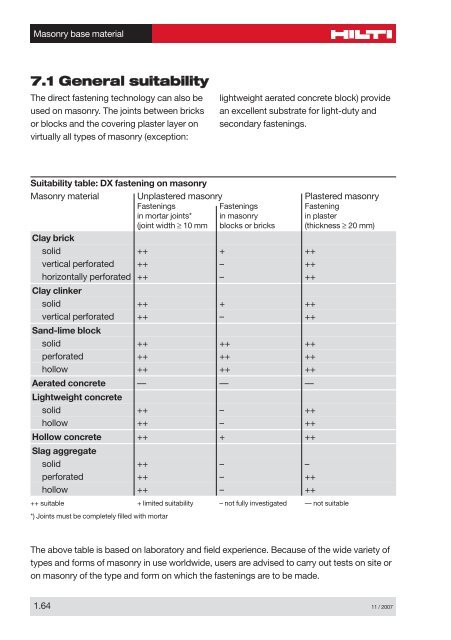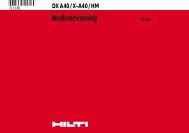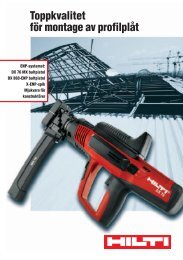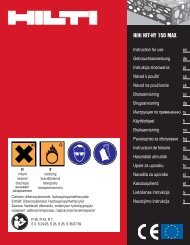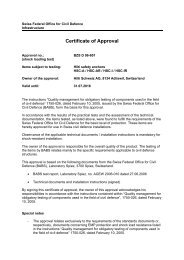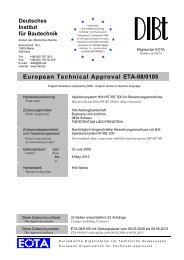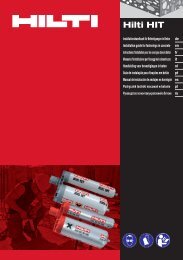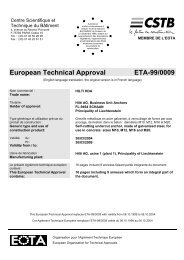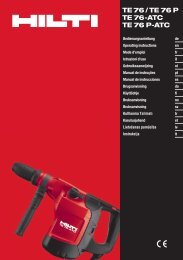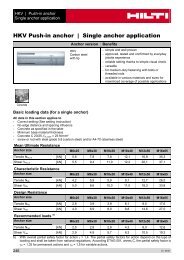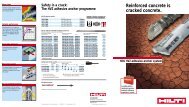00 Contents - Hilti Svenska AB
00 Contents - Hilti Svenska AB
00 Contents - Hilti Svenska AB
Create successful ePaper yourself
Turn your PDF publications into a flip-book with our unique Google optimized e-Paper software.
Masonry base material<br />
7.1 General suitability<br />
The direct fastening technology can also be<br />
used on masonry. The joints between bricks<br />
or blocks and the covering plaster layer on<br />
virtually all types of masonry (exception:<br />
lightweight aerated concrete block) provide<br />
an excellent substrate for light-duty and<br />
secondary fastenings.<br />
Suitability table: DX fastening on masonry<br />
Masonry material Unplastered masonry Plastered masonry<br />
Fastenings Fastenings Fastening<br />
in mortar joints* in masonry in plaster<br />
(joint width ≥ 10 mm blocks or bricks (thickness ≥ 20 mm)<br />
Clay brick<br />
solid ++ + ++<br />
vertical perforated ++ – ++<br />
horizontally perforated ++ – ++<br />
Clay clinker<br />
solid ++ + ++<br />
vertical perforated ++ – ++<br />
Sand-lime block<br />
solid ++ ++ ++<br />
perforated ++ ++ ++<br />
hollow ++ ++ ++<br />
Aerated concrete –– –– ––<br />
Lightweight concrete<br />
solid ++ – ++<br />
hollow ++ – ++<br />
Hollow concrete ++ + ++<br />
Slag aggregate<br />
solid ++ – –<br />
perforated ++ – ++<br />
hollow ++ – ++<br />
++ suitable + limited suitability – not fully investigated –– not suitable<br />
*) Joints must be completely filled with mortar<br />
The above table is based on laboratory and field experience. Because of the wide variety of<br />
types and forms of masonry in use worldwide, users are advised to carry out tests on site or<br />
on masonry of the type and form on which the fastenings are to be made.<br />
1.64 11 / 2<strong>00</strong>7


